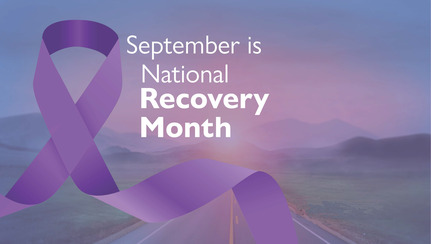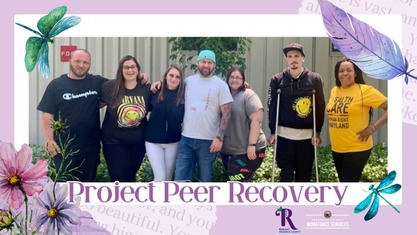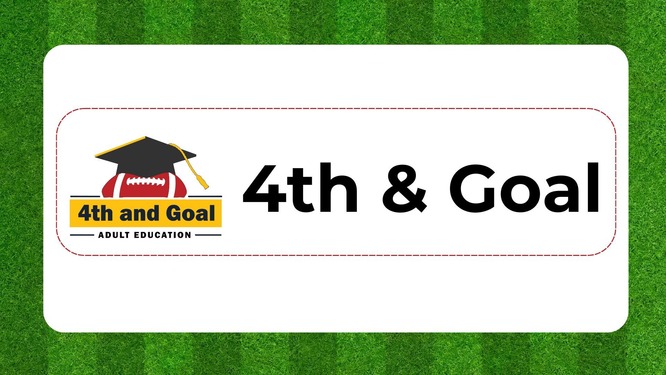
|
|
Monthly Newsletter - Issue 56, September 2024
|

Investments in Workforce Programs to Support Marylanders in Recovery
As you may know, the National Association of Workforce Development Professionals (NAWDP) in 2005 created Workforce Development Month, which raises awareness about the importance of the workforce industry to a growing national economy. Originally celebrated in May, NAWDP moved the designation to September in 2012.
But did you also know that September is National Recovery Month? Since 1989, Recovery Month has been dedicated to promoting and supporting new treatment and recovery practices, lifting up the strong and proud recovery community, and honoring the dedication of service providers and communities who make recovery in all its forms possible. Recovery Month was introduced when America’s drug crisis looked very different than it does today. Both the problems and the solutions have evolved and changed over time. The nation’s reckoning with the scope and scale of the opioid crisis has helped to shape more holistic treatment strategies that recognize the critical stabilizing impact a good job can have on the success of the recovery process. To date, Maryland’s Department of Labor (MD Labor) has invested over $10M in initiatives aimed at addressing substance use disorder (SUD) and its wider impacts through workforce development. A full list can be found here. Current initiatives are listed below. Check them out!
-
Support to Communities: Fostering Opioid Recovery Through Workforce Development Grant Program (Active through December 2024) – This $4.5m grant from the United States Department of Labor (USDOL) supported awards to Local Workforce Development Areas to provide workforce services to individuals personally affected by the opioid crisis.
-
Recovery Friendly Workplace Pilot Program (Active through September 2024) -- $440,000 from Maryland Department of Health Behavioral Health Administration to launch a Recovery Friendly Workplace (RFW) program in three impacted areas of the state. RFWs encourage a safe environment in which individuals impacted by SUD can thrive and encourages employers, employees, and the broader community to collaborate to reduce stigma.
-
Certified Peer Recovery Specialist Training for Incarcerated Individuals (Active through June 2025) - Since 2019, the Maryland Office of Overdose Respose has awarded competitive grants to MD Labor to implement a program in ten state correctional facilities designed to give incarcerated individuals the training and hands-on experience they need to sit for the Certified Peer Recovery Specialist exam. Upon completion of the program, incarcerated individuals are eligible to work as peers in paid job assignments within the Department of Public Safety and Correctional Services.
SUCCESS STORY:
Grant Program Supports a Jobseeker in Recovery in Frederick County

Katie C. participated in the pilot Project Peer Recovery, funded under the Support to Communities: Fostering Opioid Recovery through Workforce Development grant administered by MD Labor. She successfully completed the classroom training and entered into a transitional work experience at Frederick County Workforce Services where she was able to earn the volunteer and supervision hours she would need to apply for the Certified Peer Recovery Specialist (CPRS) credential. As part of her work in this role, Katie helped complete intakes, develop wellness plans, and provide resources to other jobseekers in recovery. Her dedication and willingness to go above and beyond the requirements of the position demonstrated her talent as a leader. It was no surprise that she was pursued by several employers. Katie ended the Project Peer Recovery program by accepting an offer with Frederick County Adult Recovery Services (CORE) as a CPRS! Katie is now in the application process for her CPRS certification and is studying for the exam. She also serves as a shining example of success when she speaks to new cohorts in the Project Peer Recovery program, who are inspired by her amazing journey.
|
|
|
|
|
New 4th & Goal Initiative Will Help Jobseekers Earn Their High School Diploma
 A kick-off event was held on September 16, 2024, at Anne Arundel Community College to announce the new “4th & Goal” program, a $250,000 investment by MD Labor that will provide grants of up to $25,000 to community-based and educational organizations, such as community colleges and non-profits, to provide targeted support to Marylanders who have successfully completed three out of four sections of the GED® Test and just need to complete one more to obtain their Maryland High School Diploma. There are about 400,000 Marylanders without a high school diploma. About 3,500 of these individuals have passed three tests but have not finished the fourth. Help us get the word out to connect Maryland jobseekers to this great new resource.
Learn more about the 4th & Goal proram here.

Summer Youth Employment Highlights
Local Workforce Areas across Maryland operated Summer Youth Employment Programs (SYEPs) in 2024. Here are highlights from Baltimore City, Howard County, and Carroll County!
|

New Americans Corner
Governor Moore Proclaims September as African Heritage Month in Maryland
On September 10, 2024, Governor Wes Moore proclaimed September as African Heritage Month in Maryland, celebrating the significant contributions of African immigrants to the state’s cultural, social, and economic landscape. The governor and the Governor’s Office of Community Initiatives, part of the Maryland Department of Health, were joined by members of the Maryland General Assembly and community leaders for the commemoration event in Annapolis.
Access the press release here.
Have a question about supporting the new American population in their workforce goals? Connect with New Americans Initiative Coordinator Joana Winningham at joana.winningham@maryland.gov.
|
Workforce Partners
Maryland Department of Labor Maryland Department of Human Services
Maryland State Department of Education Governor's Workforce Development Board
Maryland Department of Housing and Community Development Maryland Workforce Association
|
|
Did You Know...?
|
Maryland's Latest Workforce Development Updates
-
What is the Maryland Office of Overdose Response? -
Maryland’s Office of Overdose Response (MOOR) promotes collaboration across all state and local agencies working to address substance use and overdose in the state. MOOR coordinates the inter-agency process to identify the state’s strategic priorities for preventing overdoses, and they work to promote the Governor’s policy agenda by focusing on programs and policies under five pillars: Prevention, Harm Reduction, Treatment, Recovery, and Public Safety.
Read more about MOOR’s mandate here: Executive Order 01.01.2023.21
-
MOOR Has a New Overdose Data Dashboard -
The Maryland Department of Health recently released a new, enhanced Overdose Data Dashboard. The new dashboard replaces the previous version found at StopOverdose.maryland.gov and contains new features, such as zip code-level data and the ability to filter data.
There were 2,513 fatal overdoses in Maryland last year, according to preliminary data on the dashboard. This was a decrease of 2.2 percent from 2022, when there were 2,576 fatal overdoses in the state. More recent data on the dashboard, which currently includes information through August of this year, indicates that recent decreases in fatal overdoses have continued in 2024. Visit health.maryland.gov/dataoffice/Pages/mdh-dashboards.aspx to learn more!
Marylanders are encouraged to visit StopOverdose.maryland.gov to learn more about overdose response efforts in the state and to get connected to resources that can help, such as information about fentanyl, Maryland’s Good Samaritan Law, and how to find and use the overdose-reversal medicine, naloxone (also known as Narcan).
-
Impact of Substance Use on the Workplace -
The majority of Americans with substance use disorder (SUD) are employed—predominantly full-time. SUD in the workforce is costly to employers, resulting in absenteeism, lost productivity, increased healthcare costs, and elevated liability exposure. Workers with SUDs take nearly 50% more days of unscheduled leave than other workers and have an average annual turnover rate 44% higher than that for the workforce as a whole. By contrast, workers who are in recovery from SUD average nearly 10% fewer days of unscheduled leave per year than other workers. And, the turnover rate for employees in recovery is 12% lower than the overall average.2 Turnover is extremely costly. Recruiting and training a replacement worker costs approximately 21% of the employee’s annual salary and benefits. For more information, see this publication on the development of the Substance Use Cost Calculator for US Employers discussed below.
-
The US Department of Labor Introduces Recovery-Ready Workplace Resource Hub - Did you know that in 2022, it was estimated that there were nearly 30.6 million adults with a Substance Use Disorder who were employed, the overwhelming majority of which (78%) were full-time? This means that whether you realize it or not, you are likely providing employment services to customers impacted by substance use. Consider visiting USDOL’s Recovery-Ready Workplace Resource Hub for a wealth of relevant information and tools that include policy guidance, the latest service models, and more. If you want to know more about what is happening in Maryland, please see our Recovery Friendly Workplace website and our overview of substance use-related workforce development initiatives.
______________________________
Benchmarks of Success Newsletters
- For all previous newsletter issues, click here.
______________________________
Contact us!
Have a story you would like to see featured? Email us at dlwdalcommunications-labor@maryland.gov.
|
|
|
|
|
1100 North Eutaw Street
Baltimore, MD 21201
|
|